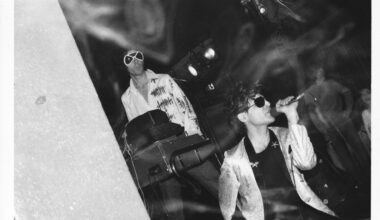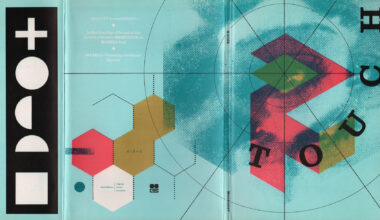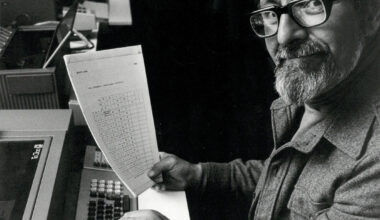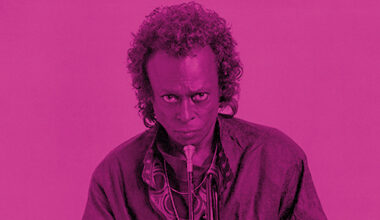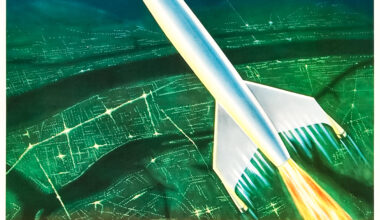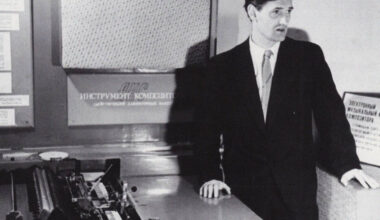We rewind to 1983 and find ourselves in a time when one record player seemed ample. And then along comes DJ godhead Greg Wilson and he’s live on the telly with two record players and they’re called “turntables”. Whatever next?

Running from 1982 to 1987, Channel 4’s freewheeling Friday teatime music show ‘The Tube’ has much to answer for (a universal crush on Paula Yates for one). There’s a bunch of stories that always get trotted out about ground broken by the show, chief among them Madonna’s live UK debut at The Hacienda and an unsigned, bondage-wearing Frankie Goes To Hollywood waving handguns around to a proto version of ‘Relax’.
Perhaps most impressively though, in February 1983 the show featured a DJ demonstrating mixing two records, for the first time on live TV in the UK.
“It was just my luck that the very point I was encapsulated in a cultural moment, it coincided with a brief phase where I looked like an extra from ‘The Hair Bear Bunch’,” says legendary Manchester DJ Greg Wilson, the man behind the moment. “The dance music scene was still very much a specialist domain, with the black kids, who were much marginalised in British society back then, right at the cutting-edge.”
The story starts with David Joseph, former frontman of chart-bothering funk outfit Hi-Tension, who had just released his debut solo album, ‘You Can’t Hide (Your Love From Me)’, and was busy promoting it with nightclub appearances.
“He’d been booked for a forthcoming dance music special on ‘The Tube’,” explains Wilson, “and some of the researchers had come to Manchester to catch his performance at Legend.”
The hugely influential Legend nightspot was one of Wilson’s main DJ gigs and he was on duty when the team from ‘The Tube’ showed up. It was quite a place, boasting the biggest soundsystem in the UK and housing a gobsmackingly huge lighting rig featuring over half a mile of neon. The regulars who filled its dancefloor would tell you that Wilson’s licks on the telly were pretty tame compared to what he got up to week-in week-out at Legend.
“The researchers were blown away by the scene and suitably impressed by my mixing,” says Wilson, “and I was approached about the possibility of giving a live demonstration on the show. The prospect both thrilled and petrified me. Being a dance special, I knew that practically every DJ in the country would be tuned in… nothing like being thrown in at the deep end.”

Piccadilly Radio DJ, Mike Shaft, who Wilson knew from the northern all-dayer scene and regularly turned in mixes for his ‘T.C.O.B’ (Taking Care Of Business) radio show, was also booked to be interviewed about his ‘N.O.W’ (North Of Watford) black music magazine, so the pair travelled together to Tyne Tees studio in Newcastle where ‘The Tube’ was filmed.
“They wouldn’t have guests unless they’d come to Newcastle,” explains Shaft. “So we went up in my car. Greg had his huge mixing unit to take up. Could we fit it in the car? Could we ’eck as like. What we had to do in the end was fold the front seat down, put it in through the boot, right across to the front seat. So I’m driving, Greg is sitting on the seat behind me, and we’re going to Newcastle to do ‘The Tube’, the coolest programme in the universe. Unbelievable!”
The clip of Greg Wilson’s DJing demo on 25 February 1983 is widely available for your viewing pleasure on YouTube and it’s a total treat.
“You get records and you actually change them about when you’re playing don’t you?” asked a skeptical Jools Holland in the pre-demonstration ramble. “Don’t you think that the scratching thing will annoy the people making the records?”
“Well, that’s the danger,” Wilson responded, quick as a flash. “Thing is, when a record’s been played in a club for a long time, people get a bit fed up of hearing it and it’s nice to hear it in a different way and that’s why I mess around with them.”
Before he went to work, Jools Holland asked him to explain what a “mixing DJ does” and helpfully pointed out the two SL1200s in turn “for those who don’t know what a turntable is”.
So, using two copies of ‘You Can’t Hide Your Love’ by the aforementioned David Joseph, Wilson showed off some basic tricks – scratching, phasing, doubling beats, echoing and adding his trademark Revox B77 reel to reel for a dub flavour – while Mike Shaft provided the TV audience with running commentary.
“What particularly fazed me was that my records were both cued up and everything was set to go, but a cameraman kept moving perilously close to my equipment,” says Wilson. “The cameraman did manage to bang into the decks, Jools and Shafty saw it happen and mentioned the fact. It was quite a bump too, but the records didn’t jump. God bless the SL-1200 Mk2, sturdy as fuck!”
For many watching at home, a whole new world was opening up before them that night.
“Throughout the coming weeks,” says Wilson, “I lost count of the amount of people who shook my hand and congratulated me. All of a sudden mine was a name on everyone’s lips. Being on ‘The Tube’ was a big deal because it highlighted our scene in a way that rarely happened outside the black music media. In Manchester, white kids from the Factory side of town who were regular viewers of ‘The Tube’, would begin to tune into my radio mixes – my appearance on TV undoubtedly exposed a previously unconnected scene that many people had been completely unaware of.”
With New Order about to release ‘Blue Monday’, the timing of Wilson’s appearance couldn’t have been better. Bernard Sumner happily admits he based the arrangement of the best-selling 12-inch of all-time on Klein & MBO’s ‘Dirty Talk’. One of the biggest tunes on the floor of which Manchester club in 1982? Legend.
“‘Blue Monday’ was a truly world-class record and the Manchester music scene would never look back as the first seeds of a black/white fusion began to take root,” concludes Wilson. “Within six months of appearing on ‘The Tube’, I’d be invited to launch my own weekly dance night on Fridays at The Haçienda, then a haunt for students and indie kids, but with aspirations to emulate the vibe of New York venues like Danceteria and the Paradise Garage. It was a slow process, but eventually, as we now know, The Haçienda would take its place as one of the most famous dance clubs in the world.”
